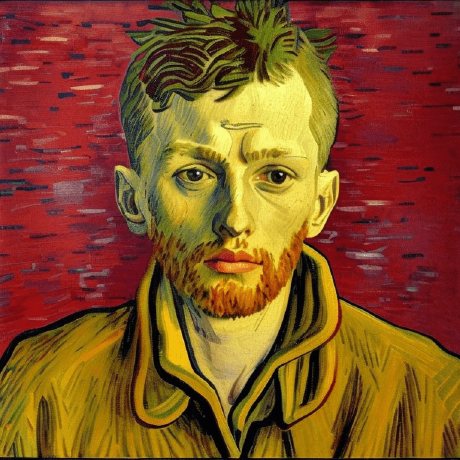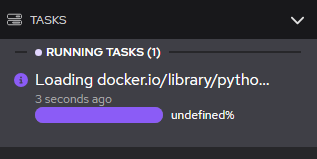The Journey of Podman Desktop in 2025
A Year of Growth and Gratitude
Welcome to the journey of Podman Desktop in 2025, a year that marked incredible growth, deeper integrations, and continued community collaboration.
This year Podman Desktop closed 1,669 issues, merged 2,814 pull requests, and welcomed 28 new contributors, with even more activity happening across extension repositories.
It’s been almost a year since Podman Desktop became a CNCF Sandbox Project (November 2024) and what a journey it’s been! From passing **three million downloads** to introducing new extensions, integrations and platform support, the project has seen remarkable progress, driven by passionate contributors and an engaged community.
This blog takes you through some of the key highlights of 2025.
A Fresh Start in January
We kicked off the year strong with the Podman Desktop 1.16 release, setting the tone for an exciting year ahead.
This release introduced a new Experimental section in Settings, giving users visibility into features under active development and linking them directly to community discussions.
Highlights included:
- Improved visibility: Providers moved from the Dashboard to the Status Bar for quicker engine status insights.
- Smarter cleanup: Ability to prune only untagged images for better system hygiene.
- Log search: Search directly within container or pod logs from the UI.
Beyond the core app, the BootC extension gained traction, enabling workflows that turn containers into bootable images.
A great start to a year where the ecosystem began expanding beyond just the main application.
The Spring Push (March – May)
Spring brought rapid iteration across releases 1.17, 1.18, and 1.19 continuing Podman Desktop’s rhythm of monthly improvements.
Key highlights:
- Podman Engine 5.5 shipped, improving reliability and performance.
- Registry mirror configuration Simplify registry mirroring setup with a dedicated command.
- Smoother kind cluster experience Spin up a Kubernetes cluster effortlessly, even without a pre-installed kind binary.
- Switching Kubernetes namespace Switching between Kubernetes namespaces within Podman Desktop is now available.
- Jobs in Kubernetes You can now see Kubernetes jobs in our growing Kubernetes section of Podman Desktop.
- Experimental status bar providers enhancements Status bar providers can be pinned and unpinned based on user preferences and the provider status icons have been updated to be easier to understand.
Along with addition and updates to the extension catalog
This phase showcased Podman Desktop’s versatility, evolving into a platform for container, Kubernetes, and AI development.
Summer Growth (July – August)
Mid-year releases v1.20 and v1.21 focused on usability improvements and developer convenience.
Highlights:
- Bulk-run containers: Start multiple containers at once—perfect for local stack setups.
- Cluster & user switching: Easier context switching between Kubernetes clusters.
- Extension discoverability: Search by description, not just name.
- Notification redesign: Cleaner, more consistent visuals.
- Duplicate installation detection: Helps users resolve conflicting Podman installs.
- Podman Engine 5.6 integrated.
These updates reflected increasing maturity, subtle but meaningful refinements that improved everyday workflows.
Broadening Horizons (September)
September was a milestone month!
- The Podman Desktop community celebrated 3 million downloads 🎉
- The new Apple Container Extension was added to the extension catalog, bringing native Apple
containersupport to Podman Desktop.
A month to remember - platform expansion, stability improvements, and community celebration all at once.
Heading into Fall (October)
October brought Hacktoberfest 2025, along with new contributors and excitement.
v1.22 launched with user-focused enhancements:
- Explore Features Dashboard section for newcomers
- Switch Podman machines between rootless/rootful modes (macOS & Windows)
- Apply Kubernetes YAML files directly without saving locally
- Transparent proxy support
- Native ARM64 installer for Windows
- Wayland display fixes for better Linux compatibility
At this point, Podman Desktop was clearly maturing into a cross-platform, enterprise-ready tool.
Smooth Refinements with Big Upgrades (November)
v1.23.1 delivered a balanced set of polished and powerful new capabilities:
- New Networks page for full network visibility and management
- Customizable dashboard & tables to match personal workflows
- Smarter Search: lookup by containers, images, pods, and volumes
- Clearer rootless/rootful indicators
- Podman Engine 5.7.0 with key security fixes
- Introduction of Managed configuration for team onboarding
- Automatic Docker context generation for each Podman machine
A clean, steady November release that unlocked more power under the hood.
🎉 Community Milestones
- 7,000 Stargazers on GitHub
- 1,000+ Followers on LinkedIn
Both milestones reflect a thriving community and growing trust in Podman Desktop’s direction.
Capping Off the Year: Release 1.24
The final release of the year, v1.24 wrapped up 2025 with UI enhancements and improved extension reliability, setting the foundation for the next phase of project growth.
These milestones highlight one thing: Podman Desktop has become a global, fast-growing, community-powered project.
Looking Ahead
2025 was a defining year for Podman Desktop - showcasing the strength of open-source collaboration.
From new features and platform support to crossing 3 million downloads and welcoming new contributors, this year reflected tremendous community momentum.
As we step into 2026, we look forward to expanding integrations, growing the extension ecosystem, and making Podman Desktop the most accessible and open developer tool for container and Kubernetes workflows.
A heartfelt thank you to the Podman Desktop Team, contributors, and users worldwide for shaping the project.
Here’s to more containers, more creativity, and more collaboration ahead! 🚀

































































































































































































 Otherwise, you do not see the option.
Otherwise, you do not see the option.





































































